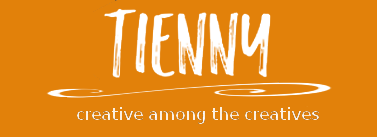Educative narrative storytelling provides the relevant neuroscience of the brain organization and structure. It is one of the most effective methods to capture meaningful patterns from chaos. Such strategy prevents confusion in the brain. Such knowledge encourages educators to add new ideas and objects with connections, recognizable patterns, and relationships through storytelling. Storytelling is often […]
Archive | Research
What is the commonly used technology tool to help the students’ practice their literacy skills?
In the digital storytelling literacy practices, the researcher Lopez observed that the students learn well through creating a blog that involved using multiple literacies (writing, images and videos) to promote their social interaction with the readers. Writing is considered as a textual composition due to use the language knowledge with multiple and dynamic facts. Hence, […]
How do young children learn from?
Young children learn by their five senses through listening and doing. According to Pelt (2018), storytelling plays a vital role to relate the participants’ experiences and to build their literacy skills. National Geographic (2020) mentions the purpose of storytelling is to entertain, educate, and inform due to its universal message of values, behaviours, and cultural […]
What is the meaning of storytelling in the cognitive realm?
Storytelling is about connection, identifying the problem, provide the solution, and even sharing conceptual richness. Thus, the meaning of storytelling is to create and enhance relationships and cognitive therapy. Through storytelling, it can identify their distortions and able to provide cognitive therapy to them to understand and make sense of the reality of the world […]
How does the story make learning better?
Pinto, G., Tarchi, C., & Bigozzi, L. (2018) shares their fifty-six primary school students on their study practices to enhance children’s interaction quality. They use macro-level and micro-level analysis to the students’ quality interaction. The macro-level is the narrative structure and coherence, whereas micro-level focus on the narrative cohesion. Since young, the children are continuously […]
Print Books vs e-Books
According to Joan Ganz Cooney Center findings on studying 32 families of the parent-child interaction, 63% of pairs have higher engagement in print books. It proves that print books prompt children to have physical interaction. There is more parent-children conversation through reading print book compared to e-book. Hence, it is a challenge for the designers […]
Comparison between children who read e-book and printed book format
The current children are exposed early towards technology devices that promote interactive activities. Electronic and app books provide the simulated reading or listening experience to the children due to its background dramatized music with sound effects and moving images. Joan Ganz Cooney Center researched the frustration of using electronic devices for parents and children when […]
Disney Magic of Animation at ArtScience Museum in Singapore
Last Saturday (26 October 2019) was a school FieldTrip to ArtScience museum for the Disney: Magic of Animation exhibition. It begins with the Mickey Mouse Steamboat Willie cardboard, where everyone can take a photo together. Turn a handle will rotate the zoetrope and see a walking Mickey Mouse. Zoetrope Then I have the opportunity to […]
Turtles, Welcome to Singapore
The natural turtles’ habitat is from tropical and subtropical coastal waters around the world. They are frequently found in Europe, North America, from Alaska to Chile. So they are named based on their frequent location. Siew Ann writes a blog for Singapore freelancers called lancerX. She notes my keen interest in turtles. Hence, she shared […]
Fraternal twins of new lives hatch out of the shell into this earth
In the birth of turtles research article, a mother turtle digs the sand. Then she lays 50 to 200 ping pong ball-shaped eggs and bury her eggs with her hind flippers. Finally, she returns to the sea. It is interesting to study and observe turtles. Sea turtles know their own weaknesses. Cold-blooded sea animals. But […]
